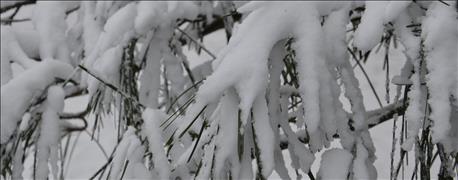
The forecast is out there. In fact, you may have read it on this website under National News a couple of weeks back. At least one private weather forecasting service had called for a cold, snowy winter in the Midwest before the first frost hit the pumpkin. How much credibility can you put in those forecasts?
Ken Scheeringa, associate Indiana state climatologist, says forecasters don’t put out a winter forecast early because they want more indications before they put their reputation on the line.
Scheeringa suggests being careful when reading articles about long-range forecasts. Some statements may be true, but they may not mean what you first assume.

CHECK FORECAST ACCURACY: You read long-range forecasts here and elsewhere. Some meteorologists this year are calling for a cold, snowy winter. Do early forecasts turn out to be right or not? There is a way to find out.
For example, here’s a statement from a private forecast already released for this winter: "Temperatures will plummet as the season goes on, averaging 6 to 9 degrees lower overall than last winter."
That could turn out to be correct, but Scheeringa says you need to keep it in perspective. “It sounds dramatic until you consider that last winter in the Midwest was about 4 to 8 degrees warmer than normal,” he notes. “The stronger departures from normal went northward. So 6 to 9 degrees lower than last year would be near-normal for the Midwest.”
Also, some statements that sound dramatic may simply be stating a natural fact, he notes. Consider the statement about temperatures plummeting deeper into winter again. “Climatologically speaking, temperatures usually ‘plummet’ as the winter season goes on,” he observes.
Then Scheeringa quips, “Want to bet temperatures will rebound next spring?”
Check forecasts
The Climate Prediction Center of the National Oceanic and Atmospheric Administration also makes three-month long-range forecasts, Scheeringa says. There is a way to determine, after the fact, how close the forecast came to being correct. Here are five easy steps you can follow to determine if winter 2015-16 turned out as CPC forecasters predicted. Climatologists refer to winter as Dec. 1 through Feb. 28/29.
1. Visit NOAA’s website. Start at cpc.ncep.noaa.gov.
2. Make a selection. When the page appears, click "Three Month Outlook" above the maps on the page.
3. Look for the next link. Click on "Verifications."
4. Zero in on a season and year. Select a season and year from the drop-down box. To get information on the original forecast for the winter of 2015-16 and maps of how it actually turned out, select "Dec-Jan-Feb" and "2016." Then hit submit.
5. Find the four maps and make comparisons. You will find a temperature forecast map above a temperature verification map, Scheeringa says. Then find the precipitation forecast map with the precipitation verification map under it. The top map is what was supposed to happen. The bottom map shows what actually happened. Draw your own conclusions.
For example, a big chunk of the country was supposed to experience normal or below-normal temperatures according to the three-month forecast a year ago. As it turned out, nearly the entire country was warmer than normal, as Scheeringa noted earlier.
Precipitation was supposed to be below normal over most of Indiana and neutral in the southern tip. Instead, precipitation for the 2015-16 winter season was above normal across almost the entire state. Snowfall totals weren’t impressive due to warmer-than-normal temperatures.
Here are those maps:




About the Author(s)
You May Also Like




